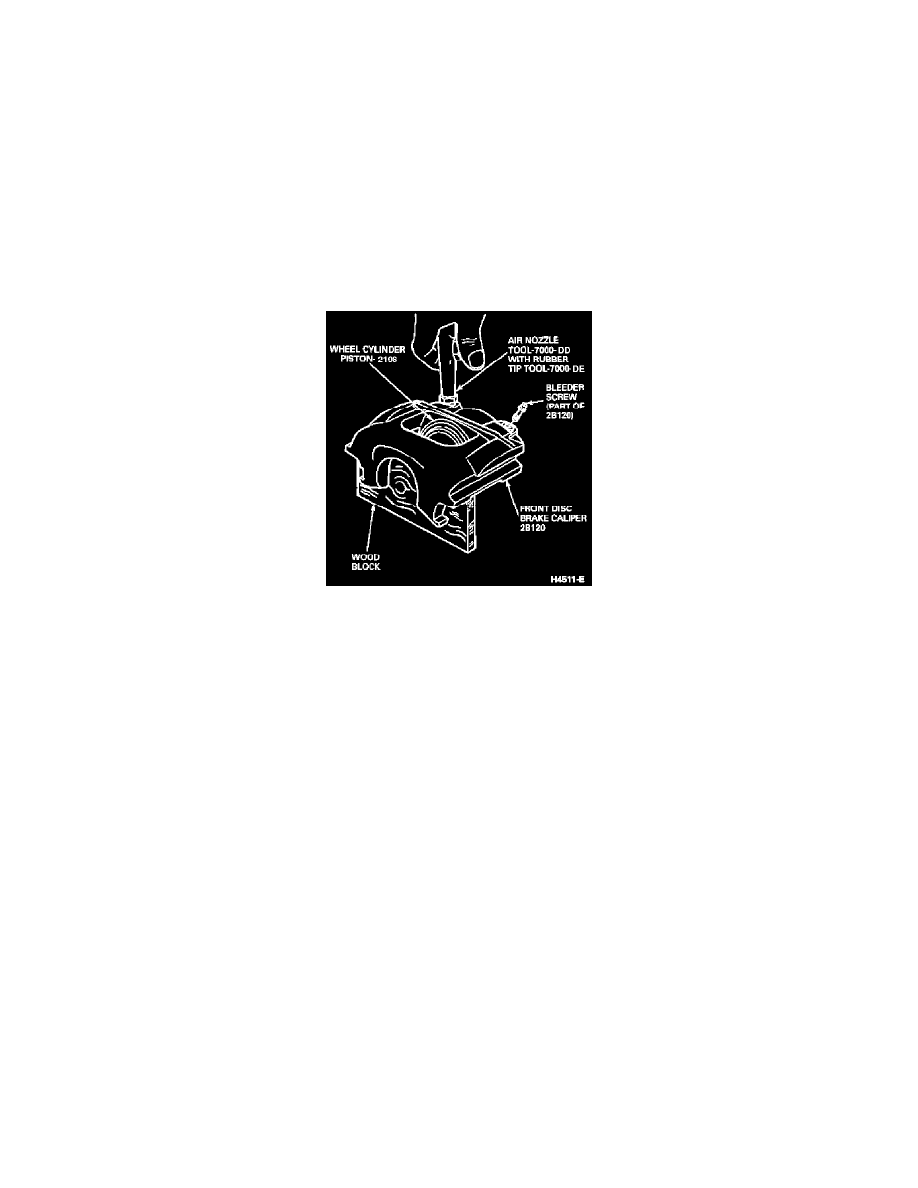Aerostar 2WD V6-182 3.0L (1995)

Brake Rotor/Disc: Testing and Inspection
NOTES:
- Front disc brake rotor minimum thickness must not be less than 20.6mm (0.81in), the number cast on the inside of the front disc brake rotor after
refinishing.
- The 70mm (2.756 in) gauge ball that is part of T71P-1102-A is used in conjunction with the micrometer gauge bar is required to make this
measurement front rotors.
- Maximum allowable stock removal of the inner rotor braking surface is determined by the use of Disc Rotor Surface Gauge and Ball
T71P-1102-A as follows:
PROCEDURE
1. Remove the inner grease retainer and bearing assembly from the hub and rotor assembly. Wipe the inner and outer bearing cups clean.
2. Carefully place the gauge ball in the inner bearing cup (do not drop).
3. Set the micrometer to the baseline setting dimension 6.50mm (0.256 in).
4. Position the micrometer gauge bar on the rotor inner braking surface with the micrometer centered over the ball. To measure the distance between
the micrometer baseline setting and the ball, turn the micrometer down to touch the top of the ball, and calculate the difference between the
reading and the baseline setting. This distance is equal to the maximum allowable stock removal from the inside braking surface only. If the
micrometer end at the baseline setting touches the ball, no additional stock removal is allowed.
NOTE: If the micrometer must be retracted from the baseline setting to allow the legs to set on the rotor surface, the rotor has had more than
allowable stock removed and the rotor assembly must be replaced.
5. Check the rotor for the maximum amount of stock that can be removed from the rotor thickness. Measure actual rotor thickness with micrometer
and subtract minimum allowable thickness 20.6mm (0.81in). Total material removal (combination of both sides) must not exceed this amount.
NOTE: If the rotor thickness is less than the minimum, the rotor must be replaced, regardless of the gauge bar and ball measurement. Rotor
minimum thickness is also shown on each rotor.
6. Never use a lathe that cuts only one face of the rotor at a time; it must be a simultaneous straddle cut.
7. Set the cutting tool to just contact the high spots on the rotor, then adjust the cutting tool to the minimum depth required to clean up the rotor face.
CAUTION: Do not exceed the allowable stock removal for the inner braking surface or total rotor thickness. Before installing the rotor on the
spindle, clean all chips from the rotor and flush new grease through the bearing with a bearing packing tool. A new inner grease seal must be
coated with wheel bearing grease and installed in the rotor. The rotor must be installed on the same side of the vehicle from which it was removed.
Measure the thickness of the brake lining. If the lining thickness at any point on the assembly is less than 1.5mm (1/16-inch) above the backing
plate or if the lining shows evidence of brake fluid or oil contamination that is causing a brake pull, replace all four shoe and lining assemblies.
Machining
1. Lathe turn the rotor to:
^
Remove rotor scoring, scratching too deep to repair by hand sanding. Deep scoring/scratching usually occurs after brake use with linings fully
worn to the rivets. Stock removal must not reduce rotor thickness to below the specified minimum thickness.
^
Correct a shudder/vibration/pulsation condition if due to rotor distortion. Check the wheel bearing adjustment and correct as required and
verify if the condition is corrected. If there is any build-up of foreign material on the linings or rotor surfaces, the condition may not be due to
rotor distortion. Hand sand the surfaces and determine if the condition is corrected before resorting to lathe turning. Check the lateral runouts
of the brake surfaces. Lathe turn the rotor if hand sanding of any foreign matter on friction surfaces does not correct the condition, or if
measured runout exceeds0.254mm (0.010 inch) total indicator reading.
